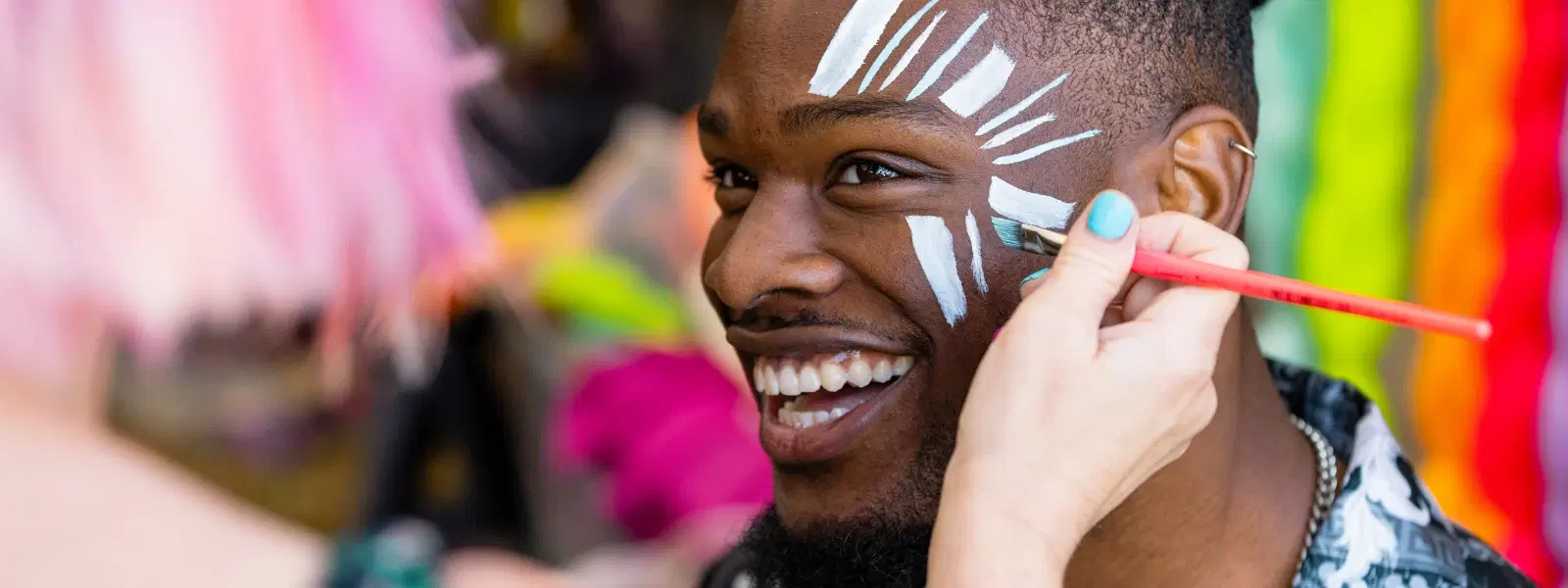
Flights
•04 min read

Imagine walking into a small village where every line on a person's skin whispers the tale of generations past. Tribal tattoo traditions have long been a living art form, deeply entwined with the identity, spirituality, and storytelling of indigenous communities. In these villages with traditional tattoos, every design speaks of valor, mysticism, and ancestral heritage.
Across continents and cultures, tribal tattoos have long marked milestones in a community's history. These designs, created many centuries ago, served as powerful symbols of identity, status, and spirituality. In many indigenous cultures, tattooing was more than decorative—it was a rite of passage, a declaration of belonging, and a badge of honor.
Villages have always been the heart of tattoo heritage. Many of these small, tight-knit communities act as custodians of ancient practices, preserving techniques and designs that modernity often overlooks. From remote corners of Asia to isolated islands in the Pacific, these places continue to thrive as centers of native tattoo culture, ensuring that the skills and stories associated with ancient tattoo techniques are not lost to time.
India is home to a rich tapestry of tribal tattoo traditions. In Gujarat, for example, the Rabari people have a distinctive style marked by intricate patterns and symbolic imagery. Journeying further northeast, the Apatani tribe of Arunachal Pradesh is renowned for their facial tattoos, which serve not only as personal adornment but also as a proud declaration of cultural identity. In Nagaland, the Konyak tribe uses tattoos as a rite of passage, each design meticulously crafted to represent social status and personal milestones.
Beyond India, numerous villages globally preserve indigenous tattoo art. In Polynesia, tattoos are celebrated with reverence as part of a long-standing tradition of native tattoo culture. Similarly, villages in the Philippines and various regions in Africa continue to honor folk tattoo traditions, using them as living symbols of community pride and ancestral lineage. Despite the pressures of modern life, these villages maintain their commitment to preserving tattoo heritage in villages, ensuring that the art remains a vital part of their cultural fabric.

The road to a traditional tattoo is often paved with tools and materials that have remained unchanged for centuries. Traditional tattoo designs were created using methods that involved natural pigments and rudimentary instruments crafted from bone or wood. The process, though time-consuming and often painful, was deeply spiritual, connecting the bearer to their ancestors and the earth. Modern tattooing may boast advanced technology, but ancient tattoo techniques carry an authenticity that is both raw and profoundly meaningful.
Every tribal tattoo carries a unique story—a blend of myth, personal achievement, and cultural symbolism. Many of these markings act as maps of ancestry, reflecting the wearer’s lineage, social status, and spiritual journey. Symbols used in indigenous tattoo art vary widely across regions; some denote protection, while others celebrate personal milestones or commemorate significant life events. The use of the number 13, for instance, often signifies rebellion or protection in many cultures, echoing philosophies found in both folk and modern tattoo designs.
In many communities, a tattoo is much more than skin deep—it is a visible reminder of one’s roots. Traditional tattoos serve as markers of ethnic identity, distinguishing individuals within their tribe and denoting social status. For many, these tattoos are essential parts of their cultural expression, used to celebrate achievements and signify transitions in life, such as rites of passage from youth to adulthood.
Today, communities and cultural organizations are actively working to preserve these ancient practices. Despite the rapid pace of globalization, many villages with traditional tattoos continue their ancestral rituals, adapting modern strategies to pass down their knowledge to younger generations. While challenges exist—such as the risk of cultural dilution—the enduring commitment to maintaining tattoo heritage in villages ensures that these practices remain vibrant and relevant.
Traditional tattooing is often accompanied by elaborate rituals. These ceremonies can include days of preparation, community gatherings, and spiritual blessings. Tattoo rituals are not solitary events; they are communal experiences that not only honor the individual receiving the tattoo but also reinforce the bond among community members. The ceremonial aspect turns the tattooing process into a celebration of life, resilience, and heritage.
The influence of tribal tattoo traditions can be felt worldwide. Modern tattoo artists draw inspiration from these ancient designs, which continue to evolve while remaining grounded in their historic origins. Younger generations have begun to embrace these indigenous tattoo art forms, merging traditional symbolism with contemporary styles. This resurgence highlights the timeless appeal of tribal tattoos as islands of cultural identity in an ever-changing world.

Did you know? Many tribal tattoo designs are not just decorative—they serve as maps of ancestry, spiritual guides, and symbols of protection. For example, the Apatani women of Arunachal Pradesh wear facial tattoos as a mark of identity and resistance to external influences.
Traditional tattoos originate from indigenous communities across the world, including Asia, Africa, Polynesia, and the Americas. They are deeply tied to cultural heritage and rituals.
The "rule of 3" in traditional tattoos refers to the balance and symmetry often found in tribal designs, where elements are grouped in threes to create harmony and visual appeal.
The number 13 in traditional tattoos often symbolizes rebellion, luck, or protection, depending on the cultural context. It is commonly associated with tattoo traditions in Western culture.
Countries with rich cultural tattoo traditions include India, Japan, New Zealand, the Philippines, Samoa, Thailand, and various African nations.
Tribal tattoo traditions offer a unique window into the depths of cultural identity and historical artistry. As villages with traditional tattoos continue to preserve these ancient techniques and rituals, they help maintain a tangible link to the past. By exploring these practices, one gains insight into the timeless legacy of indigenous tattoo art, a blend of rich symbolism, spiritual meaning, and communal heritage.